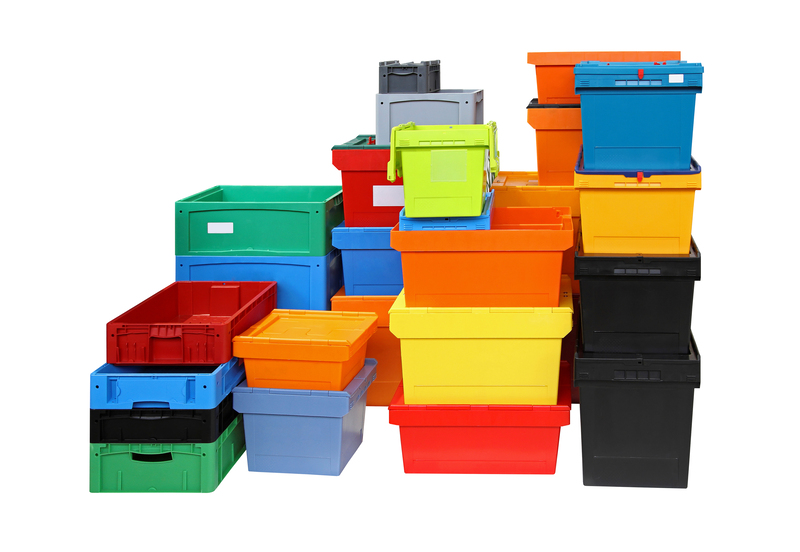Piano Moving Explained: The Case for Professional Movers
Posted on 22/06/2025
Piano Moving Explained: The Case for Professional Movers
Pianos are more than just musical instruments--they are works of art, family heirlooms, and investments. Whether you own a grand, baby grand, upright, or spinet, moving a piano is a complex task that goes far beyond moving regular furniture. This comprehensive guide explains everything you need to know about piano moving and makes the case for using professional piano movers to ensure your treasured instrument remains safe and intact.

Understanding the Complexity of Piano Moving
To truly appreciate the necessity of expert piano movers, it's important to understand what makes piano relocation so challenging.
1. The Weight and Size Factor
- Upright pianos can weigh between 300 to 900 pounds, while grand pianos can weigh anywhere from 500 to over 1,200 pounds.
- Their large, irregular shapes make them difficult to grip and maneuver through narrow hallways or around tight corners.
Attempting to move such a massive object without training is a recipe for disaster--for both the instrument and the movers.
2. Delicate Internal Components
Despite their sturdy exterior, pianos are delicately engineered with more than 10,000 moving parts. The intricate arrangement of strings, hammers, and keys needs precise alignment. Improper handling can result in:
- Broken strings or keys
- Misaligned pedals
- Soundboard cracks
- Internal frame damage
3. Value--Monetary and Sentimental
Some pianos are worth tens of thousands of dollars, while others hold immense sentimental value. Damaging a piano during an amateur move can result in losses that are irreplaceable.
The Risks of DIY Piano Moving
Homeowners may be tempted to save money by enlisting friends and attempting a DIY piano move. However, this approach is fraught with risks.
Physical Dangers
- Back strains and other musculoskeletal injuries from improper lifting technique.
- Crushed toes or fingers.
- Risk of dropping the piano, which can cause catastrophic damage.
Moving pianos is not like moving a couch or bookshelf. The balance and shifting weight increase the risk of injury, especially on stairs or uneven surfaces.
Damage to Property
- Scratched floors and dented walls.
- Gouged stair treads and damaged banisters.
Repairs can be costly, and property damage is often not covered by homeowner's insurance during a DIY move.
Instrument Damage
A misstep could result in a dropped piano, misaligned components, or broken legs and casters. These repairs are expensive, and even minor internal misalignments can affect playability and sound quality.
Why Hire Professional Piano Movers?
Given the risks, hiring expert professional movers with specialized experience in piano moving is essential.
Specialized Equipment
- Piano dollies designed to support weight and maintain balance.
- Skid boards for safe navigation up and down stairs.
- Protective blankets and padding to prevent scratches or impact damage.
- Straps, ramps, and custom crates for secure transport.
Professional piano movers bring the right tools for every situation, greatly reducing the risk of damage.
Training and Experience
Professional movers are trained in correct lifting techniques, how to disassemble and reassemble parts if needed, and how to navigate tricky spaces. Their experience allows them to anticipate and overcome obstacles, from tight doorways to spiral staircases.
Insurance and Liability Coverage
Legitimate piano moving companies are insured, meaning you'll be covered in the rare event of an accident. Most amateur moves leave you solely responsible for damages.
Efficiency and Peace of Mind
With professionals, the process is swift and far less stressful. You can focus your energy on other aspects of your move while resting assured that your piano is in safe hands.
The Professional Piano Moving Process
Understanding how a reputable piano mover works can further highlight the difference between amateur and professional services.
Step 1: Assessment and Planning
Movers conduct an initial assessment, including:
- Measuring doorways, hallways, and staircases.
- Assessing the type and size of the piano.
- Planning the safest route out of and into both the origin and destination.
Step 2: Preparation
- Removing legs, pedals, and music stands if necessary.
- Wrapping the piano in thick moving pads and blankets.
- Securing the keyboard lid and all moving parts.
Step 3: Safe Loading
Pianos are carefully hoisted onto dollies or skid boards, evenly distributing weight and protecting the delicate mechanisms inside.
Step 4: Transport
- Specialized trucks with temperature control may be used to prevent warping in extreme climates.
- Pianos are anchored securely in the vehicle to prevent any shifting during transit.
Step 5: Unloading and Reassembly
At the destination, the process is reversed with the same meticulous care. The piano is reassembled, positioned, and (if needed) can be referred to a professional tuner to restore optimal sound.
Types of Piano Moving Services
The best piano moving companies offer a range of services tailored to their clients' needs:
- Local piano moving for moves within the same city or neighborhood.
- Long-distance piano moving using climate-controlled vehicles.
- Commercial moves for schools, theaters, or studios.
- Temporary or long-term piano storage in secure, humidity-controlled facilities.
How to Choose the Right Piano Moving Company
Not all moving companies are equal. Look for these qualities in a professional piano mover:
Proven Track Record
- Positive reviews and references from previous clients.
- Experience with your type of piano and move (upright, grand, stairs, etc.).
Licensing and Insurance
- Company is registered, insured, and can provide proof upon request.
Transparent Estimates
- Written quotes with breakdowns of charges--beware of too-good-to-be-true low-ball offers.
Specialized Equipment
- Use of professional-grade moving equipment and well-maintained trucks.
Clear Communication
- Friendly, timely correspondence and willingness to answer all your questions.

Frequently Asked Questions about Piano Moving
Can any mover relocate a piano?
While many general moving companies claim to move pianos, only companies with specialized piano moving services have the necessary training and equipment.
How much does professional piano moving cost?
Costs vary depending on factors like:
- Piano size and type
- Distance of the move
- Complexity (stairs, tight spaces, hoisting requirements)
Will my piano need tuning after the move?
Most pianos require tuning after a move due to changes in humidity, temperature, and vibrations. Consider scheduling a stop at a professional tuner after your piano is safely in its new home.
Can pianos be moved in winter?
Yes, but special care is required to prevent cracking due to cold and dryness. Professional piano movers know how to protect instruments from the elements during transit.
Conclusion: Trust The Experts for Piano Moving
Your piano is an investment deserving the utmost care and expertise. Entrusting the task to skilled piano moving professionals ensures the safety of your cherished instrument, your property, and everyone involved. The cost of hiring experienced movers is far less than the potential expenses and heartbreak of repairs or injuries stemming from an amateur move.
When it's time to move your piano, choose a reputable piano mover with specialized experience and equipment. Your treasured instrument--and your peace of mind--will thank you.
Key Takeaways
- Moving a piano is uniquely complex due to its weight, size, and internal sensitivity.
- Attempting a DIY move risks physical injury, property damage, and costly repairs to the instrument.
- Professional piano movers bring training, equipment, insurance, and efficiency to the table.
- Choose a piano moving company with proven experience, transparent pricing, and solid reviews.
Ready to move your piano? Trust your investment to professional movers who understand the true art and science behind the craft of piano moving.









